“It’s not just my job, it’s literally what I do for a hobby, too!”: Brian Wampler talks pedal culture, cork-sniffing, and the never-ending search for better tone
The guitar effects guru drops by to talk circuit design, gear obsessions, and the crazy used pedal market. “Like this Germanium Tumnus I’ve seen for $800 or $900. That’s insane! I would never buy that pedal for $800, $900. Ever”
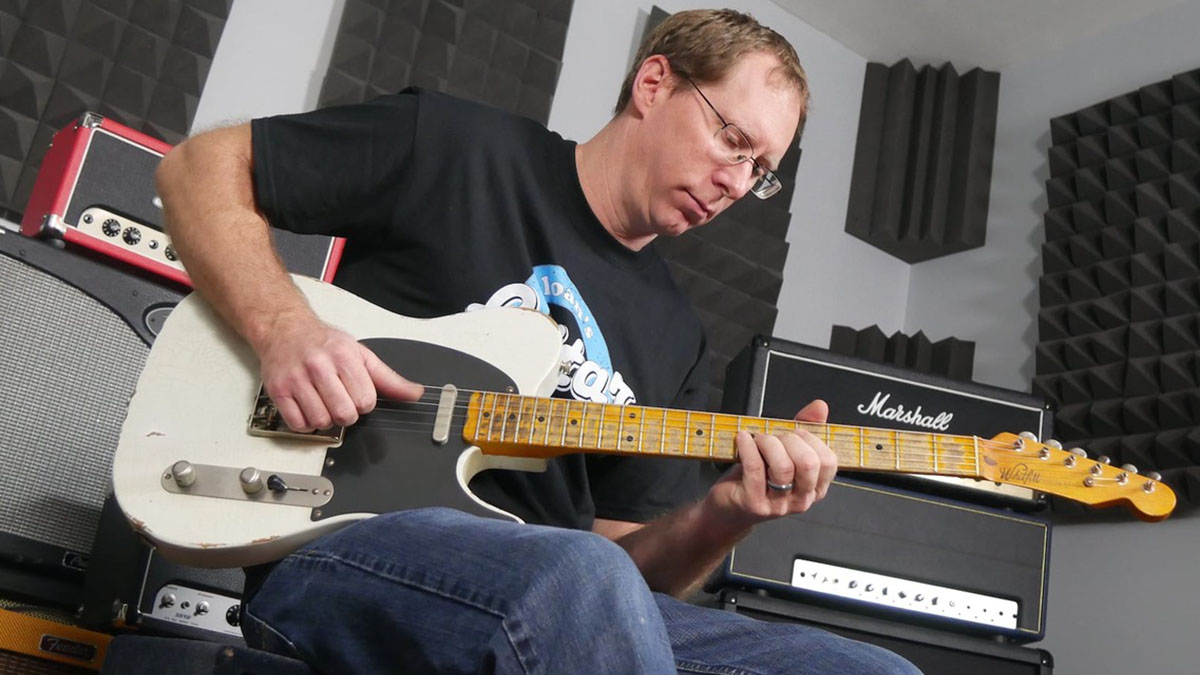
Brian Wampler never set out to put his name to a guitar effects pedal company and make a living out of stompbox design. It just happened that way. Like every other tone hound out there he was following his nose, trying to sound like his heroes.
“I always approached this, even as a kid, as a very naive, ‘How do I sound like Eddie Van Halen?’ Even as a little kid I’m buying inexpensive amps and wondering why my little Gorilla amp is not sounding like the Van Halen II record,” says Wampler, with a knowing chuckle, because haven’t we all asked ourselves that question in one form or another? “Like, ‘Why is that not happening!?’ And yeah, as I went along, me buying some pedals, me trying some processors, trying other amps. That was tone chasing back in the ‘80s and ‘90s.”
That search for electric guitar tone can pull different players in different directions. Like most of us, Wampler started buying pedals, trying processors, experimenting with different guitar amps. But Wampler would ultimately take this hunt him to the breadboard, via the gear forums that offer a platform for the stompbox modding community to share schematics and ideas.
“I have always been the type of person who took things apart – not necessarily put things back together, but taking things apart and seeing how they worked,” he says. “I’ll replace a few of these parts and I’ll see what it sounds like, and I got hooked on that.
“‘Oh wow! I can take this cheap Boss DS-1 and really make it sound a lot different. I can have the same cheap pedal with five different tones from the same pedal.’ I became addicted to that idea, modifying all these pedals. Then eventually I was like, ‘I’ve never built a pedal. Maybe I should try that.’”
I had to learn the business on the fly
Wampler did exactly that, and it was when gigging with his DIY pedals that his designs got noticed when travelling through Nashville a lot, other players would enquire about them.
Some wanted to buy them. Wampler had an idea; what if he sold a couple on eBay? What if he sold 10? Then a retailer made enquiries, and that’s when it started to get real. “I had to learn the business on the fly,” says Wampler.
Want all the hottest music and gear news, reviews, deals, features and more, direct to your inbox? Sign up here.
Wampler Pedals is now considered one of the leading US pedal companies, with signature artists including Brad Paisley, Cory Wong, not to mention Andy Wood, whose Gearbox is as deluxe an overdrive pedal you will find, pairing two of Wampler’s most successful drive circuits, the Tumnus and Pinnacle, in one housing.
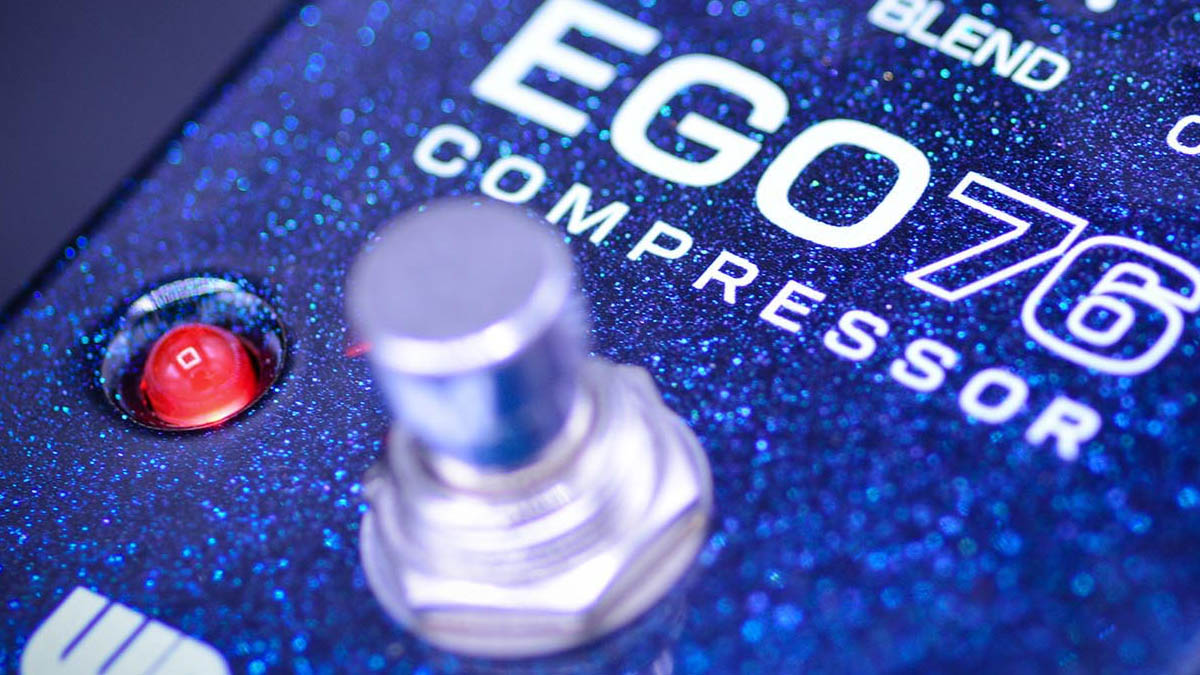
But has that much changed for Wampler? In a sense, not that much has changed, in the sense that he’s designing pedals for work, but also out of curiosity too.
Like, on Saturday night, this weekend, I was just breadboarding stuff – not for a product, just for, ‘I wonder what happens if I do this with a transistor on this circuit?’
When those two motivations combine, we get something like the EGO 76 Compressor, which launched last week and offers studio-grade parallel compression in a compact housing – which is of course an inherently commercial proposition. Who doesn't need a top-quality FET-based compressor pedal as a tone-sweetener and master of your dynamics? But it also a chance for Wampler to pay tribute to Bill Putnam and his 1176 Peak Limiter, and to satisfy his own curiosity.
Because if there is one through line in Wampler’s career, and in this conversation that discusses the madness of pedalboard culture, the phenomenon of component cork-sniffing, and the outrageous prices of the second-hand market – is that even if he didn’t have this business you’d probably find him doing the exact same thing as he is now.

Tinkering in the studio, chasing tones. If you’re reading this, chances are you can relate.
“It’s not just my job, it’s literally what I do for a hobby, too!” he says. “Like, on Saturday night, this weekend, I was just breadboarding stuff – not for a product, just for, ‘I wonder what happens if I do this with a transistor on this circuit… I wonder what would happen?’ And I did it, just out of curiosity. ‘Oh well, that created a weird compressor.’”

Out of all your pedals, it’s arguably the drives that you are most famous for. Did that happen just by following your curiosity?
“As I was learning these things, I just bought a breadboard, and I started looking at different circuits on the internet, putting them together, and critically listening. Okay, what makes this type so much different to this type? And again, pretty naively, I just started listening [to them]. ‘When I hit, this one has a little bit more compression for some reason. What’s causing that compression?’
‘Oh, when you make that capacitor bigger it gives it more bass. That’s weird.’ That’s really how I just started learning, and the reason for even wanting to learn was the fascination between all these different types of guitar tones,
“So then I would do more research, read about it, do some more breadboarding and substitute parts. ‘Oh, when you make that capacitor bigger it gives it more bass. That’s weird.’ That’s really how I just started learning, and the reason for even wanting to learn was the fascination between all these different types of guitar tones, even if they are all, say, Plexis.
“Even if they are all 80 per cent of them were Plexi-based, you could have radically different tones, so just the idea that you could take the same gear and be completely different. For some reason it always intrigued me.
“Then, of course, I dove down into the studio side. ‘Oh well, how’s that miked? What preamp? What compressor is on it? How are they EQing it at the board? Who’s doing the mixing and who’s doing the production on this?’ It was really expanded a lot over the years even though I am kind of focused on the gain side.”
Even from strictly a player’s POV, there’s an obsession over components. There will be some people with an opinion – informed or not – about the difference between the LM308 IC op amp and the Wampler Ratsbane’s op amp, which you recognised by socketing the drive engine for modders to swap out. But do we focus too much on components?
It is a common question we get: ‘What op amp are you using?’ And I’ll tell people. It’s not a secret. But the bigger thing behind it is not necessarily what part it is, it is do you like the thing that it does?
“It is a common question we get: ‘What op amp are you using?’ And I’ll tell people. It’s not a secret. But the bigger thing behind it is not necessarily what part it is, it is do you like the thing that it does? And more importantly, when you play it, does it inspire you to write music or record? Whatever you do, whatever’s your thing, does it inspire you do that? Because that’s really what I am trying to get at.
“When I am creating something and I start noodling around and come up with something, it’s like, ‘This is a cool product. This is gonna be cool.’ But if there’s no inspiration there it’s like, ‘Nah. Doesn’t do anything.’ Why proceed further if it doesn’t inspire me to want to continue.”
I would definitely think of myself as the person who’s trying to make something for a reason
Cork sniffing is definitely an observable phenomenon.
“The cork sniffing thing is really interesting to me because there are multiple types of people who buy guitar gear. There are people who buy guitar gear because they have a need; they need a delay or whatever. And then there are others who love all the different aspects of buying the thing, playing it, and then they might flip it later on.
“And that’s fine, but I would definitely think of myself as the person who’s trying to make something for a reason. And I build a lot of stuff for me personally and the reason is I am trying to get a particular tone and I am just not able to get it exactly how I want [with existing gear].”
Other times there is a lack of due diligence and we we buy a pedal and it creates the problem, a tone problem we have to figure out after the fact.
“Yeah, and you see people going in cycles, too, where they’ll have a group of pedals, then they’ll buy some new things, eventually they’ll sell some stuff, buy the old stuff again, and then start back where they started… I mean, I do the same thing!
“I’ve been going through these old Crate Palomino amps. I used to use them years ago, got rid of them, and then as I see people using them I think, ‘Oh, I’m going to grab one of them,’ mainly for nostalgic reasons. I play through it and actually this is a really good amp. Play it through a nice cabinet, with nice speakers, it is a great amp. ‘Why am I not using this!?’ I do the same sort of thing! [Laughs]”

Pedal culture is quite wild. It’s hard to predict where it would go and it seems uniquely beholden to internet virality – like the Bad Monkey business, which must have made you think of refinishing the Triumph in green to cash in.
“These trends change a lot over time... What’s become more popular is taking an existing circuit and tweaking it a little. Like Robert Keeley just came out with the Muse Driver, it did really well
“These trends change a lot over time too. Back in 2010, 2012, we have a pedal called the Pinnacle that’s kind of Brown Sound-y, quote/unquote, and that was huge! We just couldn’t make enough of them, and then it seems like lately, what’s become more popular, is taking an existing circuit and maybe tweaking it a little. Like Robert Keeley just came out with the Muse Driver, it did really well.
“I partnered with a company called Electric Love. We did this thing for cancer [the Aquatone]. I just designed the circuit. But it’s a Blues Driver, a fancy Blues Driver I did a bunch of changes to, and all the profit of that went to a cancer charity. We sold out of those quick, like, a day or two.
“But again, that was a situation where people wanted a tweaked Blues Driver, and of course Tube Screamers are always popular, Big Muffs are always popular. But for whatever reason, trend-wise, right now people are liking some sort of take on a popularised circuit.”

Talking about NOS transistors and the supply issues inherent in all that. Are we going to get to a point where there will be none left? Is the industry big enough to sustain production of these parts?
“I don’t see a shortage in surface-mount stuff. The larger through-hole stuff? Yeah, sure. I mean, that stuff has just gone away. They don’t make them anymore. But they do have the surface-mount version of them.
“Some people would argue they sound different. I can’t tell. If any difference that I’m noticing it is more in the layout side of things, and so you can kind of alter the layout to get different effects, different kind of capacitances, and you can also design that in there.”
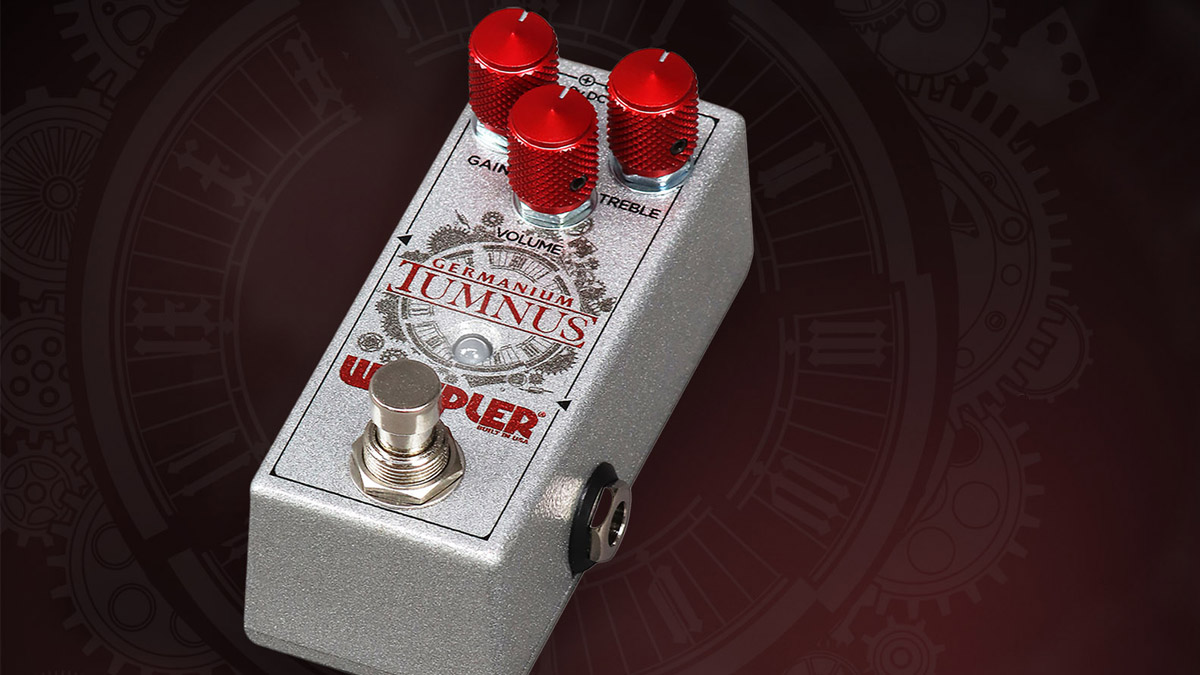
“When you compare one pedal to another, and you put both of them on a frequency analyser, you are looking at all the different frequency spectrums and you’re like, ‘Well the one with the through-hole seems like it has less highs so I just need to create some filtering to give this surface-mount version some less highs.’
“I look at it more like a scientific approach. I don’t really feel like, ‘Oh this one sound feels totally different!’ Because electrons move in the same way – they are still going to do what electrons do, right? I think the big difference is the germanium diodes we just had a problem with.”
“We released a pedal called the Germanium Tumnus, and we only had several thousand of [these diodes] to make several thousand of these pedals and they are a specific type of germanium diode that hasn’t been made for years, and it’s one of those situations of once they’re gone they’re just gone.
“You might be able to find pockets of them, like 50 here, a 100 here, but we lucked into finding thousands and that is not going to happen again. At least with this very specific type of diode. So that does happen, for sure, and I have not seen a surface-mount version of that diode. I don’t think it exists!”
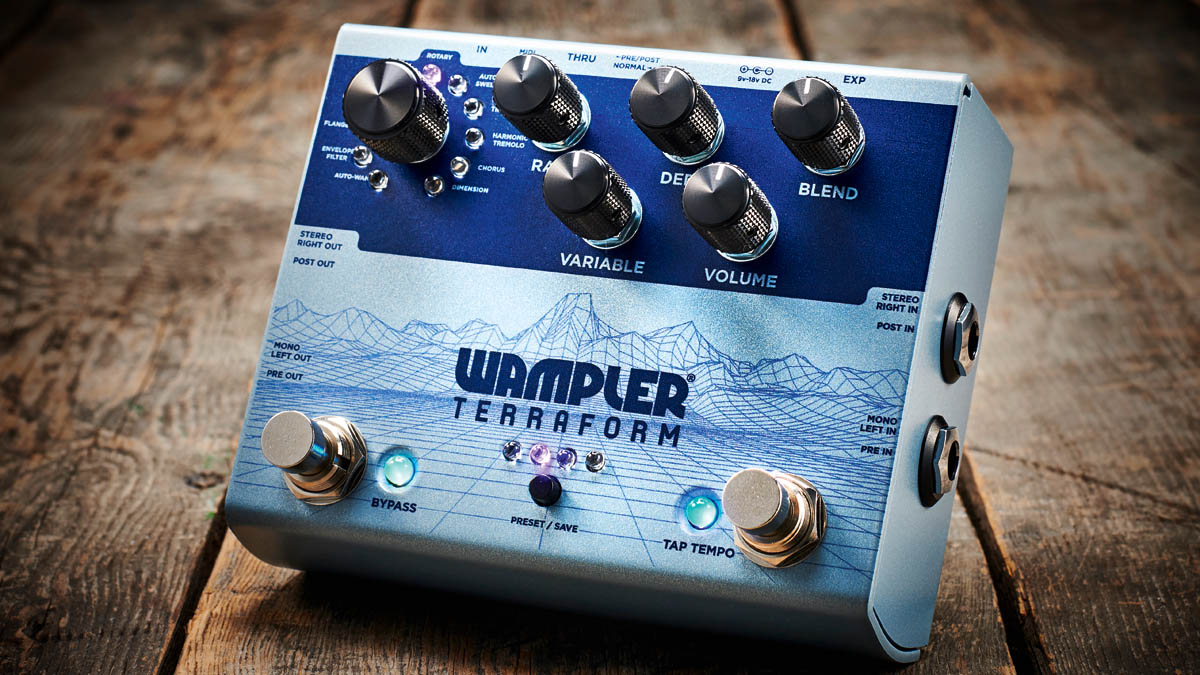
What about digital technology and overdrive and distortion. Is it a heavier lift to design digital gain pedals?
“It’s different. I don’t really do a whole lot of the digital side. I have got a couple of engineers with me that do a lot of that heavy lifting, but I have done a little bit. I have done a little bit of neural modelling.
“I tend to like the neural modelling side – I guess you could call that profiling – more so than like the digital modelling, where you are taking a resistor and you’re saying, ‘Mathematically, a resistor does this…’ and you are using all these math formulas to output the sound of a distortion.
I just have not been that happy with modelling components like that, and I think the neural modelling stuff is a lot closer in my opinion
“I know there are a lot of companies that do it that way, and that’s cool, to me it always just seems like there’s this wispiness. And I have been trying to think of a good phrase for it – and that’s really not a good phrase – but there’s just this weird artefact that I can never dial out of the thing. I just have not been that happy with modelling components like that, and I think the neural modelling stuff is a lot closer in my opinion.
“But there’s also the problem of latency, too. There is always going to be a bit of latency, so if you are playing it – especially through headphones – sometimes it just feels weird, and I tend to think some of that is just the latency involved.”
Is there any pedal in your lineup that doesn’t get enough love? One that people didn’t get?
“Probably. And I might actually do another take on this. We had a pedal called the Fuzzstration, which was kind of built around a Big Muff topology, which people have done for a long time, but I done a bunch of stuff on that that I hadn’t seen on other production pedals and it just did not do well – for a couple of different reasons.

• Wampler Fuzzstration review
This is a pedal that revels in plenty of pizzaz while ticking the (fuzz) boxes of many...
“One, it was big. It was landscape rather than portrait. It is kind of a dumb name! It’s kind of a stupid name. I probably should rename that. The graphic is a little corny. There is a bunch of things at play.
“But I probably just marketed it wrong. Rather than just being another Big Muff clone we probably should have done some sort of marketing spin that would have differentiate it from the sea of thousands and thousands of other Big Muff clones.”
It is a cool pedal.
“Circuit-wise, I was thinking about this the other day, I would love to do another take on that. Maybe we’d do a switch selector that can go from like the op amp version to the transistor version. That might be something quite cool to do. But yeah that was one of those pedals that just didn’t hit for whatever reason.”
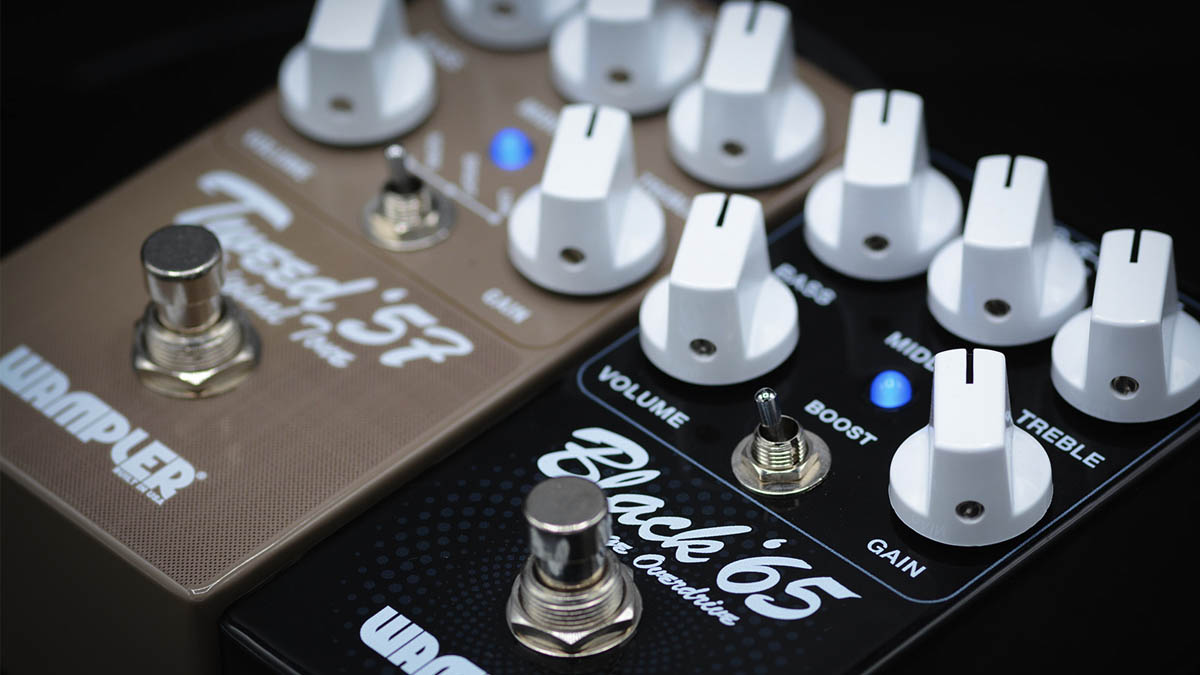
Your two Fender-inspired preamp pedals are often misunderstood. What can you tell us about the design. Are they all analogue?
“I’ve been a big fan of using JFETs, and I use those to sort of mimic what a 12AX7 tube stage is doing, because they kind of work similarly. There are some differences but you can design around it so you can get fairly close with a 9V circuit.
“That was where I was starting from. I want the sound of a tweed on the verge of breakup – that’s the Tweed ’57 – and with the Black ’65, I want to be able to use it on a pedalboard with a pedalboard amp if I need to. Let’s say my amp craps out, I now have a preamp, a little power amp I can run into my cabinet, and that will get me through the gig.
“I love the sound of a Deluxe Reverb that’s on nine! It’s a little fuzzy. It’s a little crunchy. It’s a combination of overdrive and fuzz and there’s a hint of that clean signal coming through still. I just love that tone.”
It has a little bit of that Neil Young unruliness when you push it that far.
“Yeah! I kind of came up with those out of selfish desires – and they did okay. I think they actually did better once we discontinued them. I saw for a while the Black ’65 was $400 or $500 on the used market, which is insane to me but…
This Germanium Tumnus I’ve seen for $800 or $900. That’s insane! I would never buy that pedal for $800, $900, ever
“We rereleased a small batch of them. I don’t want to say to kill the used market but to definitely drive the price down a little bit so those prices aren’t crazy. That is one thing I don’t like about the used market, like this Germanium Tumnus I’ve seen for $800 or $900. That’s insane! I would never buy that pedal for $800, $900, ever.”
With a lot of these OOP pedals they rise to such a price that it’s not like you want to sell it but you can’t afford to keep it on your pedalboard!
“[Laughs] Yeah! And I understand that it is the desire to have a thing that you can’t get, and so it’s higher priced, so it must be better. There’s a psychological aspect to it but still, I am not the person to [buy them]. I am not Josh Scott! I don’t buy multiple Klons. He is further into the game as far as trying to buy elusive gear.”
Everyone has their own rabbit hole to fall into…
“They do! I go more into the technology side, the design aspect of it, and I think he likes to own the historic piece, the old vintage unit, and he and I are good friends so that is not a dig at all.”
- Check out Wampler Pedals for more info
Jonathan Horsley has been writing about guitars and guitar culture since 2005, playing them since 1990, and regularly contributes to MusicRadar, Total Guitar and Guitar World. He uses Jazz III nylon picks, 10s during the week, 9s at the weekend, and shamefully still struggles with rhythm figure one of Van Halen’s Panama.




